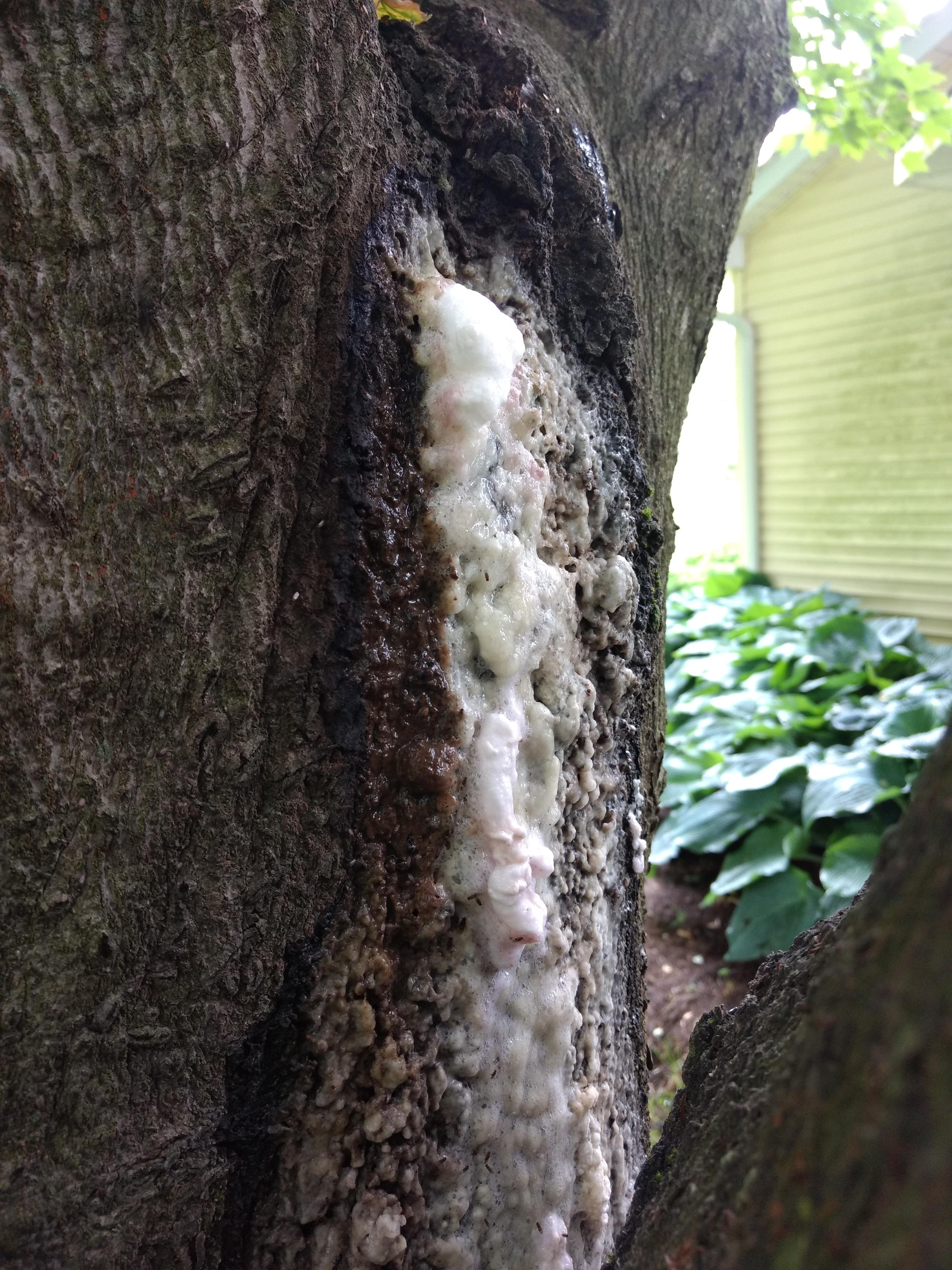Symptoms
- The most obvious symptom is sap flowing from bark cracks or other wounds in the trunk or branches.
- This sap flow may be more abundant at certain times of the year or may stop entirely and then restart again.
- This condition will cause dark streaks on the bark where the sap has run, which can turn gray or white when dry.
- The liquid may smell fermented or "alcoholic" when fresh.
- Slime flux can slow down callus formation (tissue formed to seal off tree wounds) and wound healing.
- Trees may be injured but may not develop symptoms of slime flux for several years.
Cause of slime flux
- Generally, it is caused by common surface-inhabiting bacteria or yeast fungi that invade wounds and live off the nutrients in the tree sap.
- The sap eventually is forced out of the wound by pressure from gases produced by the microorganisms living in the sap.
- Trees that commonly develop slime flux are elm, oak, and mulberry, and to a lesser extent maple, birch, butternut, redbud, sycamore, and walnut.
Management
- There are no treatments that will cure trees with slime flux symptoms.
- The installation of drain tubes is generally not recommended since drilling holes can cross natural barriers within the tree and may spread the microorganisms in the slime flux fluid throughout larger areas in the tree.
- Formerly water soaked wood may also be subject to attack by wood decay fungi.
- Unless the tree is in decline just monitor the symptoms and follow optimal cultural practices that minimize stress.
- Contact a certified arborist for an onsite evaluation of the tree if you suspect the tree is not otherwise healthy.
